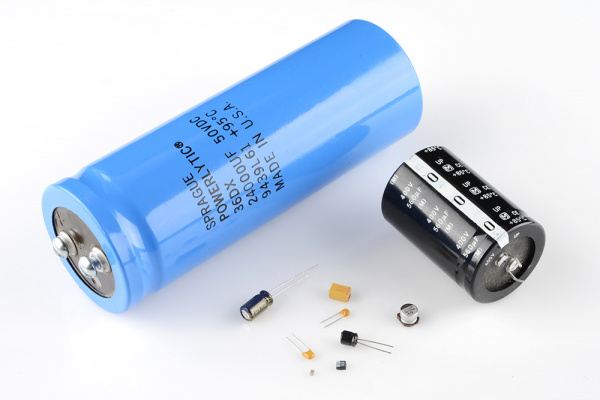INDUCTORS
An inductor, is a passive
two-terminal electric component which resists changes in electric
current passing through it. It consists of a conductor such as a wire,
usually wound into a coil. When a current flows through it, energy is
stored temporarily in a magnetic field in the coil. When the current
flowing through an inductor changes, the time-varying magnetic field
induces a voltage in the conductor, according to Faraday's law of
electromagnetic induction,which opposes the change in current that
created it.
An inductor consists of a coil of conducting wire.
If current is allowed to pass through an
inductor, it is found that the voltage across the inductor is directly
proportional to the time rate of change of the current. Using the
passive sign convention,
where L is the constant of proportionality called the inductance.
Inductance is the property whereby an
inductor exhibits opposition to the change of current flowing through
it, measured in henrys(H).
The current-voltage relationship is obtained as,
The energy stored is,
We should note the following important properties of inductor:
1. An inductor acts like a short circuit to DC.
2. The current through an inductor cannot change instantaneously.
3. The ideal inductor does not dissipate energy.
4. A practical, non-ideal inductor has a significant resistive component.
SERIES AND PARALLEL INDUCTORS:
Inductors in Series
Inductors can be connected together in either a series connection, a
parallel connection or combinations of both series and parallel
together, to produce more complex networks whose overall inductance is a
combination of the individual inductors. However, there are certain
rules for connecting inductors in series or parallel and these are based
on the fact that no mutual inductance or magnetic coupling exists
between the individual inductors.
The current, ( I ) that flows through the first inductor, L1
has no other way to go but pass through the second inductor and the
third and so on. Then, inductors in series have a Common Current flowing
through them, for example:
IL1 = IL2 = IL3 = IAB …etc.
Inductors in series equation,
Then the total inductance of the series chain can be found by simply
adding together the individual inductances of the inductors in series
just like adding together resistors in series. However, the above
equation only holds true when there is “NO” mutual inductance or
magnetic coupling between two or more of the inductors.
Inductors in Parallel
Inductors are said to be connected
together in “Parallel”
when both of their terminals are respectively connected to each
terminal of the other inductor or inductors. The voltage drop across all
of the inductors in parallel will be the same. Then, Inductors in
Parallel have a Common Voltage across them and in our example below the
voltage across the inductors is given as:
VL1 = VL2 = VL3 = VAB …etc
In the following circuit the inductors L1, L2 and L3 are all connected together in parallel between the two points A and B.
Thus,
Here, like the calculations for parallel resistors, the reciprocal ( 1/Ln )
value of the individual inductances are all added together instead of
the inductances themselves. But again as with series connected
inductances, the above equation only holds true when there is “NO”
mutual inductance or magnetic coupling between two or more of the
inductors. Where there
is coupling between coils, the total inductance is also affected by the
amount of coupling.



























